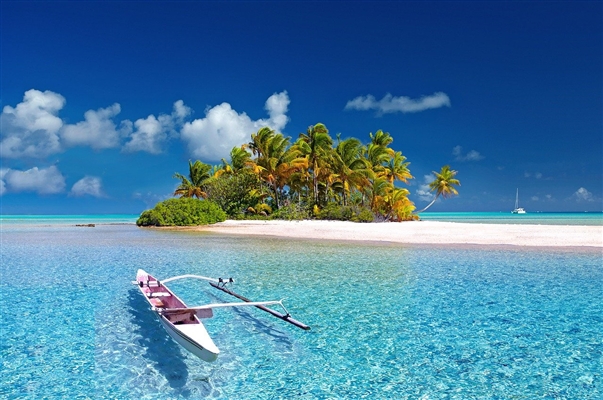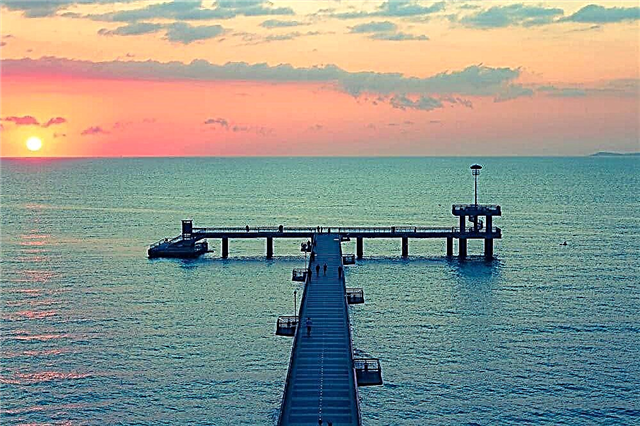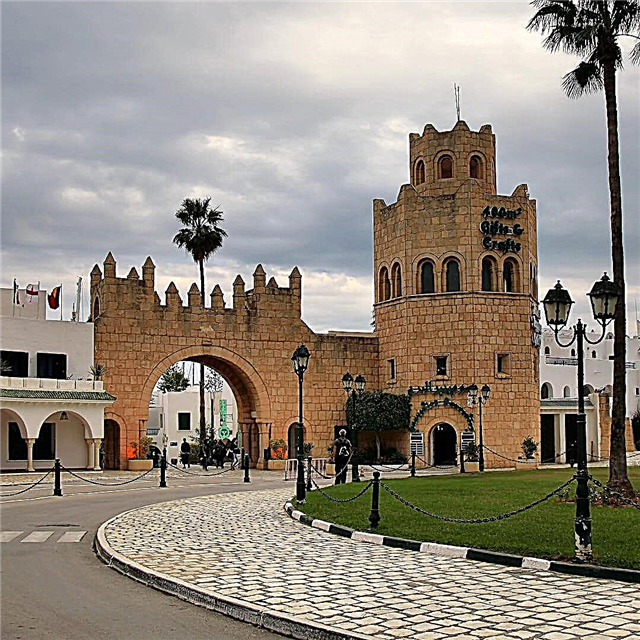Spain is not just jamon, excellent wine and stunning beaches. The cultural heritage of modern Spaniards was greatly influenced by the dominion of many peoples who inhabited these lands. That is why Spain is a bizarre mixture of styles and traditions in absolutely everything: from architecture to cuisine. Accordingly, a lot of interesting things await tourists here. The country's turbulent past is reflected in numerous museums, ancient castles and majestic temples that abound in the sunny land.
The main tourist cities of Spain
List of the most interesting cities for cultural tourism.
Barcelona
There are a lot of interesting things here. From architectural landmarks: Gothic temples, ancient minarets and squares to modern monumental structures such as the famous Barcelona stadium. You should definitely visit the colorful Boqueria market, a giant Mediterranean aquarium, famous singing fountains and dozens of various museums: dedicated to Picasso, military, football, chocolate, archaeological and others.
Population - 1 636 762 people (2019)

Madrid
The most famous museum in Madrid is dedicated to the symbol of Spain - jamon. In addition to the "tasty" institutions, there are also maritime, national, decorative arts, and a number of others. As a seaside city, Madrid has a luxurious oceanarium and a zoo. Two more huge botanical gardens and a couple of giant amusement parks: Casa del Campo and Disney's analogue from Warner Brothers.
Population - 3 266 126 people (2019)

Valencia
In addition to ancient castles, cathedrals, buildings with a long history, Valencia is famous for its Oceanographic Center, which has gathered hundreds of representatives of the deep sea from all over the world. Fans of ecotourism visit Albufera Park, a swampy reserve that has sheltered millions of rare species of birds. The Prince Philip Science Museum with unique collections also delights visitors.
Population - 794 288 people (2019)

Palma de Mallorca
A coastal tourist town is impossible without a dolphinarium or oceanarium. In Mallorca, both are available. The region is also rich in caves, the most famous: the Dragon, so named for the stalactites that resemble teeth, and the huge cold Arta. Tired of cultural recreation with viewing architecture and visiting museums, you can look into the entertainment park "Kathmandu" with many extreme attractions.
Population - 416,065 people (2019)

Seville
A great place for leisurely cultural tourism. Visitors here are majestic religious buildings, such as the Seville Cathedral, the Church of St. Luigi, the Hospital of the Five Sacred Wounds and high ancient towers: Harald and Golden. You should definitely see the Marie Louise Park, aka the city botanical garden, which is home to African and European flora.
Population - 688 592 people (2019)

Santa Cruz de Tenerife
A small town in the Canary archipelago that grew out of a fishing village. There are few special attractions here, the settlement is a resort, a traditional Spanish coastal town. Therefore, it is appreciated by tourists as a calm place for a quiet beach holiday. It is worth looking here at the ancient temples: Francis of Assisi, the Immaculate Virgin and Masonic. And be sure to visit the Auditorio de Tenerife - a grand concert hall.
Population - 207 312 people (2019)

Granada
The pearl of Granada is the majestic brick fortress of the Alhambra, located on the cliff of the Sierra Nevada. In addition, it is interesting to wander through the real labyrinth of narrow streets of Albassin - the Moorish quarter. And in the caves-cafes you can enjoy the real rhythms of the famous flamenco, sipping icy sangria and admiring the grace and genuine passion of sultry Andalusian dancers.
Population - 232 462 people (2019)
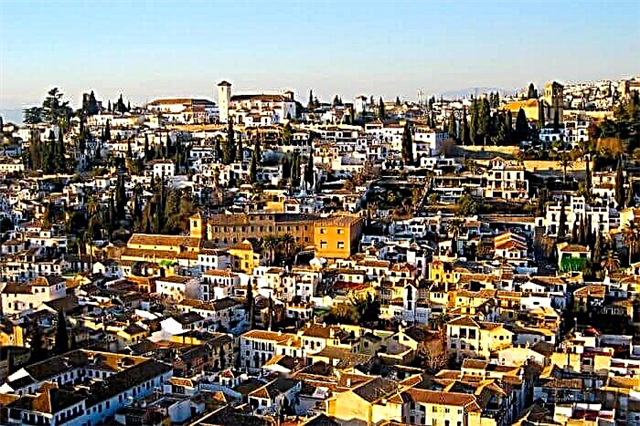
Cordova
The main attraction is the ancient Alcazar, founded by the Romans. The castle has absorbed the architectural preferences of all its owners: Visigoths, Arabs and Andalusians. The former capital of the Cordoba Caliphate is one of the most "Moorish" cities in Spain, which is fully reflected in its appearance. It houses the Flamenco Museum, the ancient synagogue of Cordoba and the Mesquita Cathedral-Museum, a former mosque that became a Catholic church after the Reconquista.
Population - 325 701 people (2019)

Zaragoza
Another colorful city with a complete mix of styles. Among the attractions are both Moorish buildings like the Aljafería Castle, which has survived almost without restoration, and Christian basilicas and cathedrals. There is a museum of the sculptor Gargallo and a local analogue of our local history - dedicated to the history of Zaragoza. Tourists are attracted by the Expo-2008 exhibition pavilion with the largest freshwater aquarium in Europe.
Population - 674 997 people (2019)

Malaga
The main attraction rises above Malaga - the Alcazaba fortress of the 11th century, rebuilt by the Berbers in the traditional Arabian style. But fans of extreme sports value the city for something else: the local Plaza de Toros, "Bulls Square" - a grand arena for bullfighting, with a restaurant serving horned participants defeated by brave matadors. In addition to bullfighting, there are a number of interesting museums here: automobile, Picasso, botanical park.
Population - 574 654 people (2019)

Segovia
A small Castilian town with a history of over two millennia. Its entire historical center is included in the UNESCO lists. So, as a sightseeing tour, an ordinary walk through the heart of the ancient settlement is quite suitable. Here is the Alcazar castle in the shape of a ship, several ancient churches and the Segovia Museum, literally filled with works of art collected from Spanish monasteries.
Population - 51 674 people (2019)

Alicante
The city is dominated by Santa Barbara, a huge fortress at the top of Bencantil, a majestic cliff. This is not the only castle of Alicanet, there is also San Ferdinando: a rather fresh fortress from the era of the Napoleonic wars, which turned out to be completely useless. Tourists are sure to visit the Mercado Central, a huge food market and local museums, including archaeological and art.
Population - 334 887 people (2019)

Benidorm
Spanish Manhattan, so named for the abundance of skyscrapers. Exceptionally tourist town with a lot of entertainment. From traditional bullfighting to ultra-modern nightclubs. Fans of a quiet holiday should prefer the outskirts of Benidorm: there are many quiet national restaurants, amazing beaches, and various antiquities with cultural attractions are just a stone's throw away, for example, the village of Guadalest with its ancient castle.
Population - 68 721 people (2019)

San Sebastian
A seaside town with a glorious military history. Accordingly, most of the attractions are dedicated to the Spanish navy. A feature of the architecture is the assimilation of the building to the French style, for which San Sebastian was nicknamed the Spanish Paris. Here is the Ayate Palace, the former residence of Franco, the Spanish dictator. The prestigious San Sebastian Film Festival of European Cinema is also held here.
Population - 187 415 people (2019)

Bilbao
The heart of the city is the historic Casco Viejo quarter with architectural landmarks. In addition to interesting antiquities, such as churches and the collection of archaeological finds from the local museum, the town is famous for its modern wonders.For example, the Guggenheim Museum dedicated to contemporary art, the Subisuri Bridge and the "flower dog" - a living sculpture of seventy thousand plants.
Population - 346 843 people (2019)

Avila
The main attraction of the Castilian city is the longest mixed fortress wall in Europe. Its 87 towers and kilometers of fortifications are made in different styles and materials: gray stone and sandstone. In addition to walking along the wall, it will be interesting to visit the ancient Catholic basilicas and the center for the interpretation of mysticism, dedicated to the preservation of local folklore about the supernatural.
Population - 57 744 people (2019)

Caceres
The city is entirely included in the UNESCO list. A kind of "Spanish Prague", preserved in medieval form to this day. Inhabited museum with traditional narrow cobblestone streets trampled by caligas of Roman legionnaires and boots of Spanish pikemen. Here, absolutely every house is a landmark. It is a favorite filming location for films about medieval Spain, so many of the views will seem familiar to tourists.
Population - 96 126 people (2019)

Cuenca
It was founded by the Iberian Celts and changed many owners: from the Romans to the Moors. Cuenca is often called the standard of the Spanish province, a quiet town that seems to have fallen asleep for centuries. Main attraction: Kasas Kolgadas - hanging houses, old buildings adhered to like swallow nests on a sheer cliff. Another attraction is the Science Museum with the famous time machine model.
Population - 54 876 people (2017)

Valladolid
Once - the capital of Spain, now - the industrial center of the state. Here is the oldest long-term construction - the cathedral, the foundation stone of which was laid in 1582, and the construction is in progress and now. The main attraction is the house of Columbus, where the famous navigator ended his life. Now it is a museum of the discoverer with a rich collection of his personal belongings.
Population - 298 412 people (2019)

Ibiza
The capital of the world famous island of Ibiza. Clubbers and party-goers from all over the world come here, but the city has something to show besides crazy parties. The city is very ancient, founded by the Carthaginians, sworn enemies of the Romans, already 2500 years ago. The main attraction is the castle-museum with a collection of archaeological antiquities, Phoenician ruins and the majestic Hill of Mills necropolis.
Population - 142,065 people (2016)

Salamanca
The cultural center of Spain, the main attractions are architectural, represented by ancient religious buildings. In addition to temples, you can visit the Diocesan Museum, the most famous exhibit of which is a statue of the Virgin Mary entirely made of ivory and an art museum with a collection of works by Spanish painters. The visiting card of the city is the House of Seashells, a 16th century mansion decorated with hundreds of shells.
Population - 144,228 people (2019)

Cartagena
There are many attractions here, some of them are the legacy of the Romans and Carthaginians, a little got from the Moors and are carefully preserved by the Spaniards. Among them are the Roman amphitheater, combined with the museum, the ruins of the Punic fortress, the castle of Concepcion depicted on the city coat of arms, the ruins of the church of St. Mary. Relatively new: school of midshipmen and a maritime museum with unique exhibits.
Population - 214 802 people (2019)

Marbella
A fashionable resort not devoid of historical sights. Among them are Roman baths, ancient towers and the governor's house. The Municipal Museum of Marbella has a rich collection of archaeological wonders, and the Bonsai Garden is also popular. Women come here to walk around the statue of Don Juan: according to legend, within a year after this simple ritual, unmarried ladies find their betrothed.
Population - 143 386 people (2019)
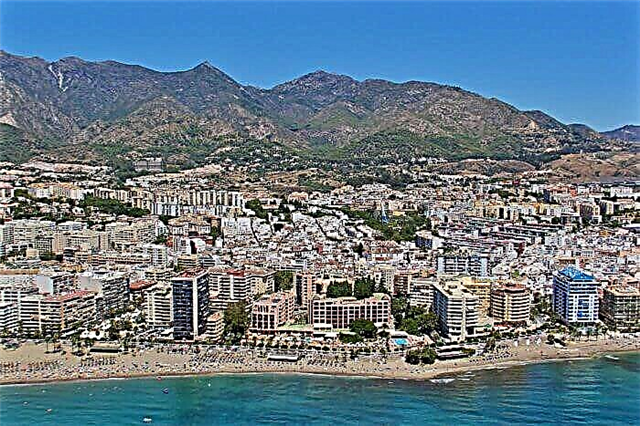
Santiago de Compostela
The main attraction is the grandiose Romanesque cathedral with an adjoining museum that collected archaeological finds from the excavations during its restoration. The cathedral towers are open to access, there is a special tour of its roof. The hotel "Shelter of Catholic Kings" of the 16th century is noteworthy, where you can stay or, for a modest fee, walk through its halls with an excursion.
Population - 97 260 people (2019)

Tarragona
The city is known for its perfectly preserved Roman buildings: the aqueduct (also known as the Devil's Bridge), the amphitheater, the palace of Augustus and the ruins of the ancient citadel. Tourists also have access to the Poblet Abbey, the Santes Creus Castle Monastery and the Cathedral. The fishing quarter of El Serallo, with its huge market, and the Rambla Nova, a popular tourist shopping destination, are definitely worth a visit.
Population - 134 515 people (2019)

Girona
The main attraction is the former 9th century Ile-Kall Jewish quarter, built in its original form. The city is surrounded by well-preserved fortifications, built by the Romans, including fortress walls and towers. Part of the shaft is suitable for walking. There are several old churches and cathedrals; tourists visit the famous "Arab baths" at the Capuchin nunnery.
Population - 101 852 people (2019)

Alcala de Henares
This suburb of Madrid has been fully recognized by UNESCO as a World Heritage Site. Cervantes's hometown naturally acquired a museum dedicated to him, which tourists must visit. In addition to him, visit the Comedy Theater and the local university. The town is famous for its frequent and grandiose festivals, during which costumed processions and abundant fairs are held.
Population - 195 649 people (2019)
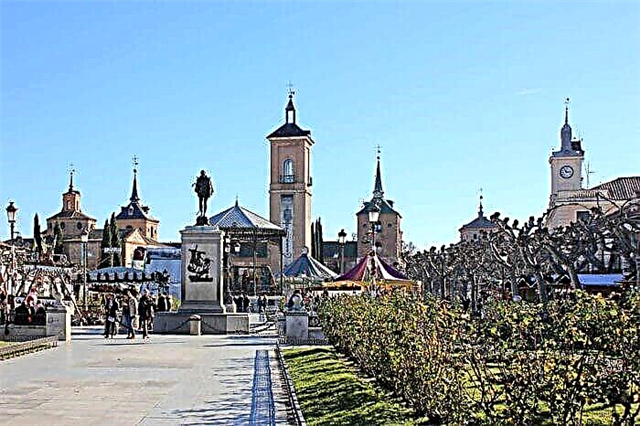
Toledo
The city is dominated by the Alcazar, a huge medieval castle, a must-see on any tour. Besides it, there is the San Servando bastion, an example of classical Spanish fortification. They also visit the house-museum of the painter El Greco in the Jewish quarter and the Church of St. Thomas. Of particular interest are the expositions of the Toledo Museum of the History of the Inquisition with real antique torture devices.
Population - 84 873 people (2019)

Burgos
In the bowels of the local Gothic cathedral is the tomb of the national hero of Spain, the hero of many romances and literary works of Sid Compador. In addition to numerous temples and the old bastion of the Reconquista times, tourists are attracted by the modern museum of human evolution. Here are kept artifacts testifying to the development of the human race: tools of labor, the first samples of art objects, and so on.
Population - 175 821 people (2019)

Las Palmas de Gran Canaria
In addition to the traditional Spanish abundance of old temples, La Palmas boasts modern attractions. For example, the Atlantic Center for Contemporary Art and the Alfred Kraus Hall, which hosts the annual film festival. The Canary Museum contains many wonders from the archipelago: from mummies, ceramics and antique weapons to rare items of pagan cults of the ancient owners of the islands.
Population - 379 925 people (2019)




